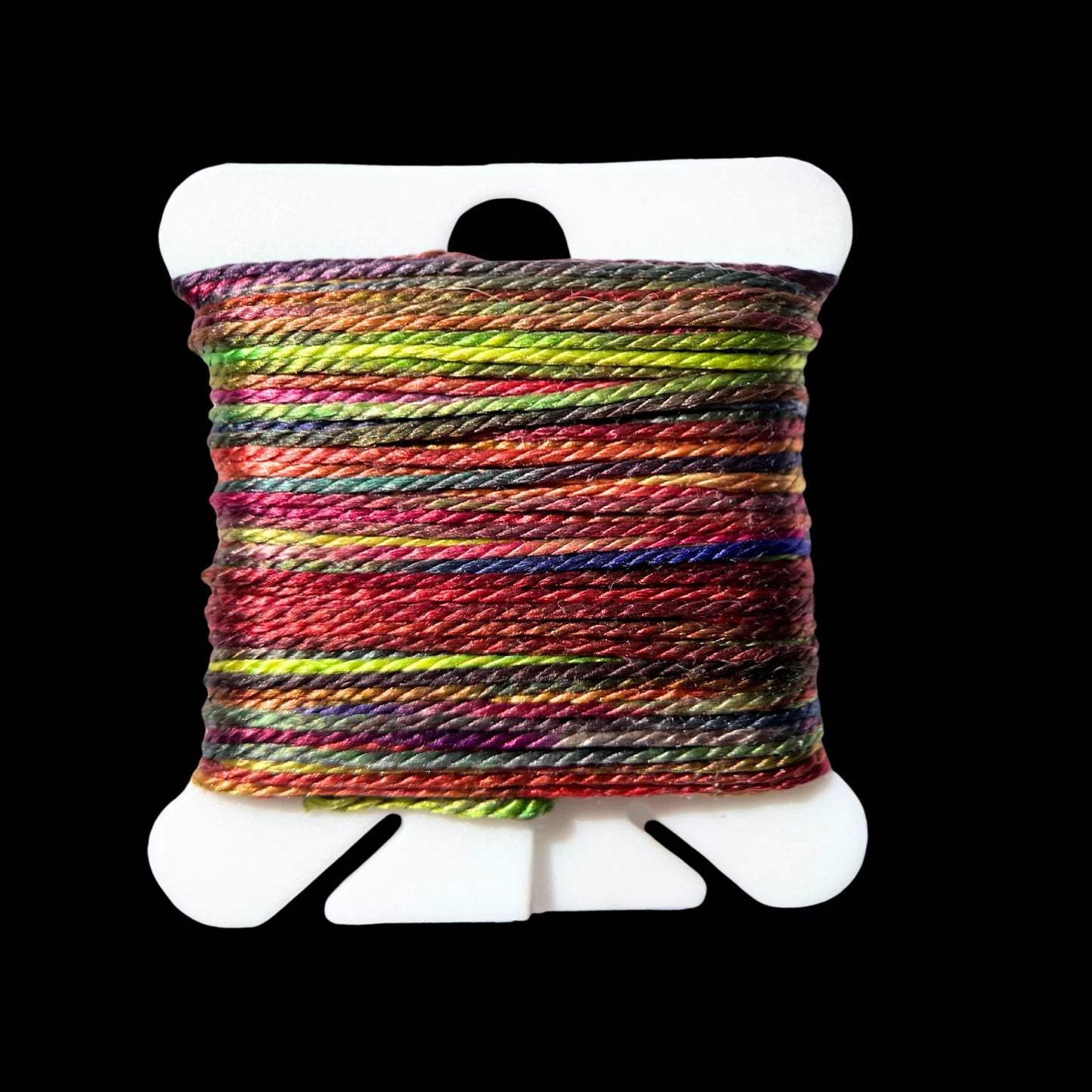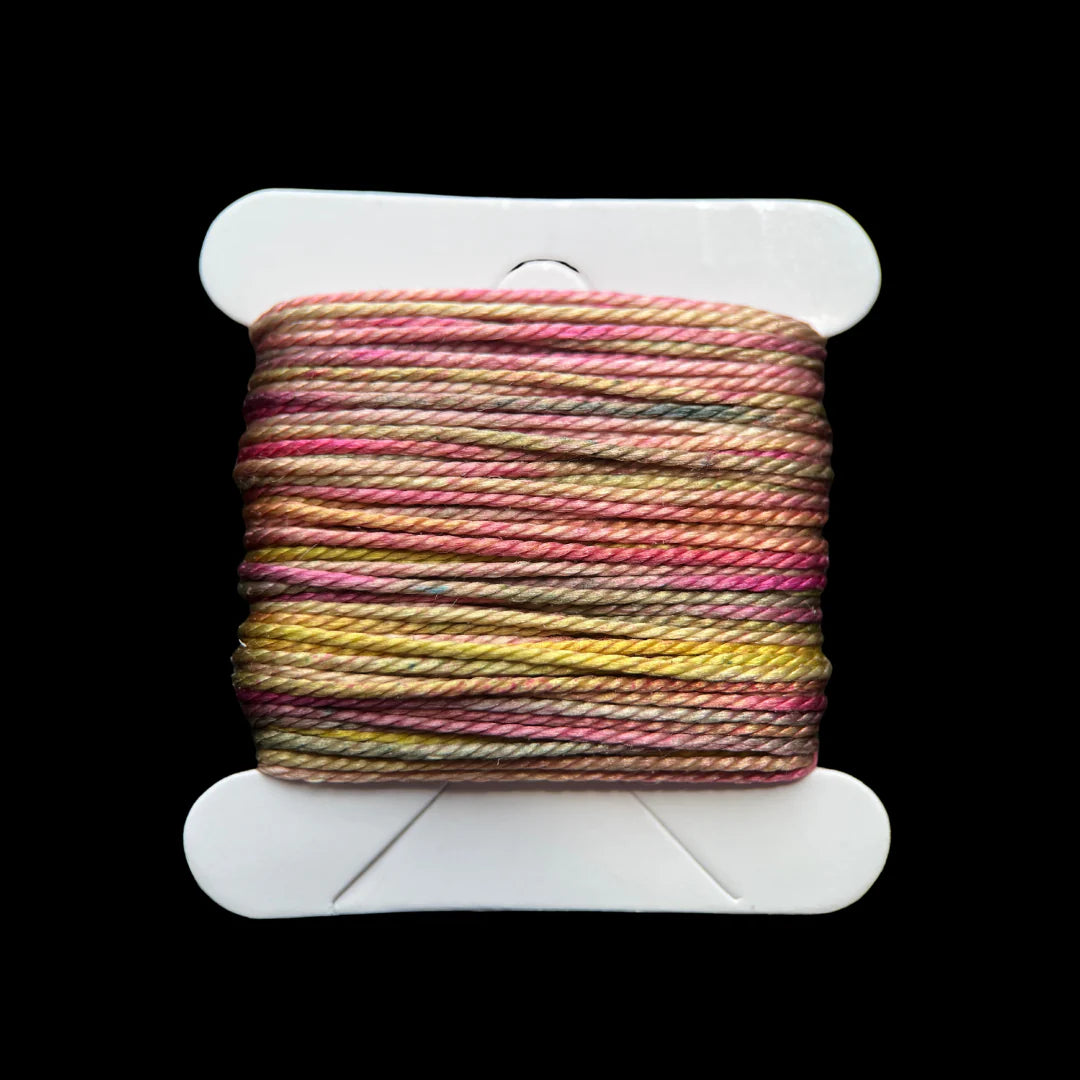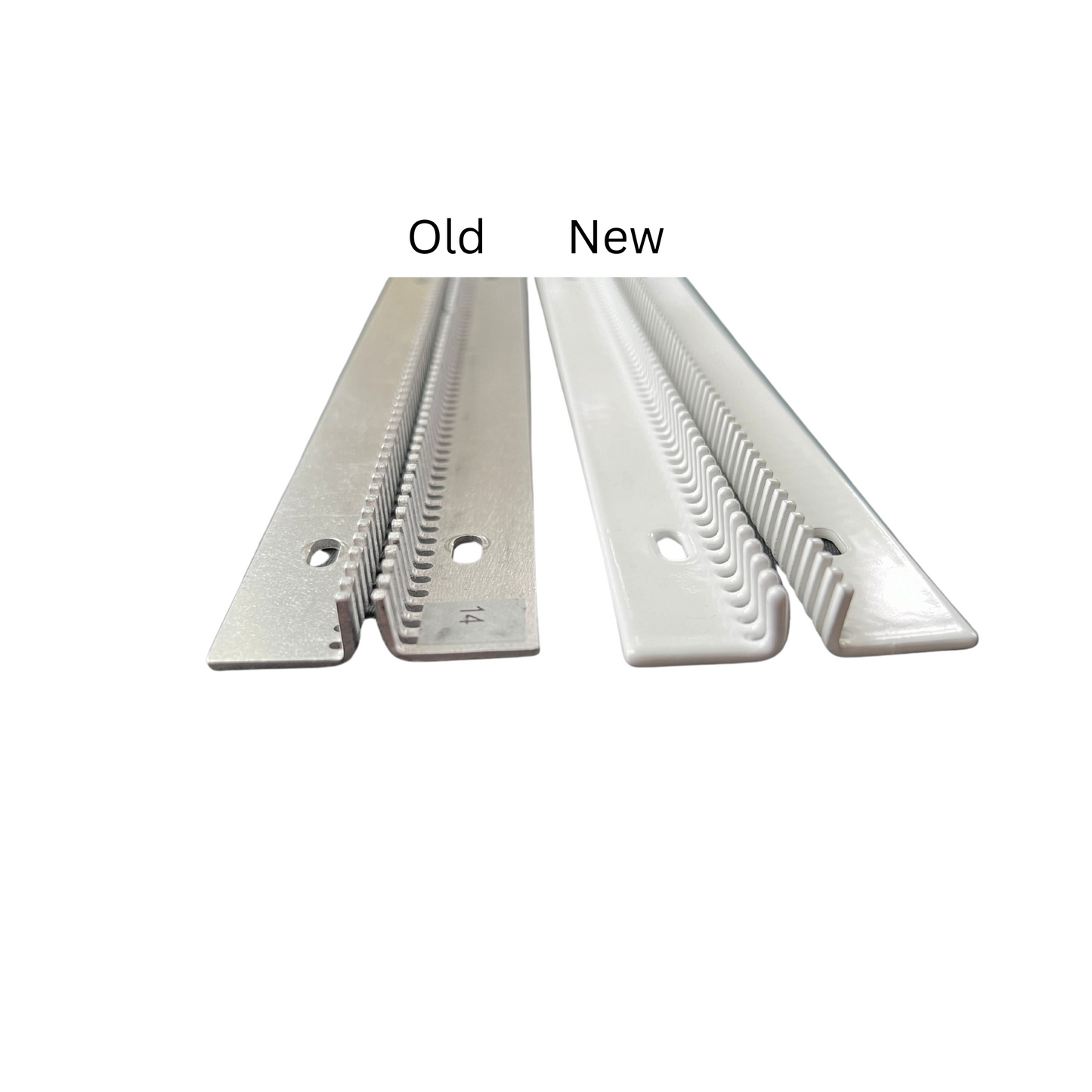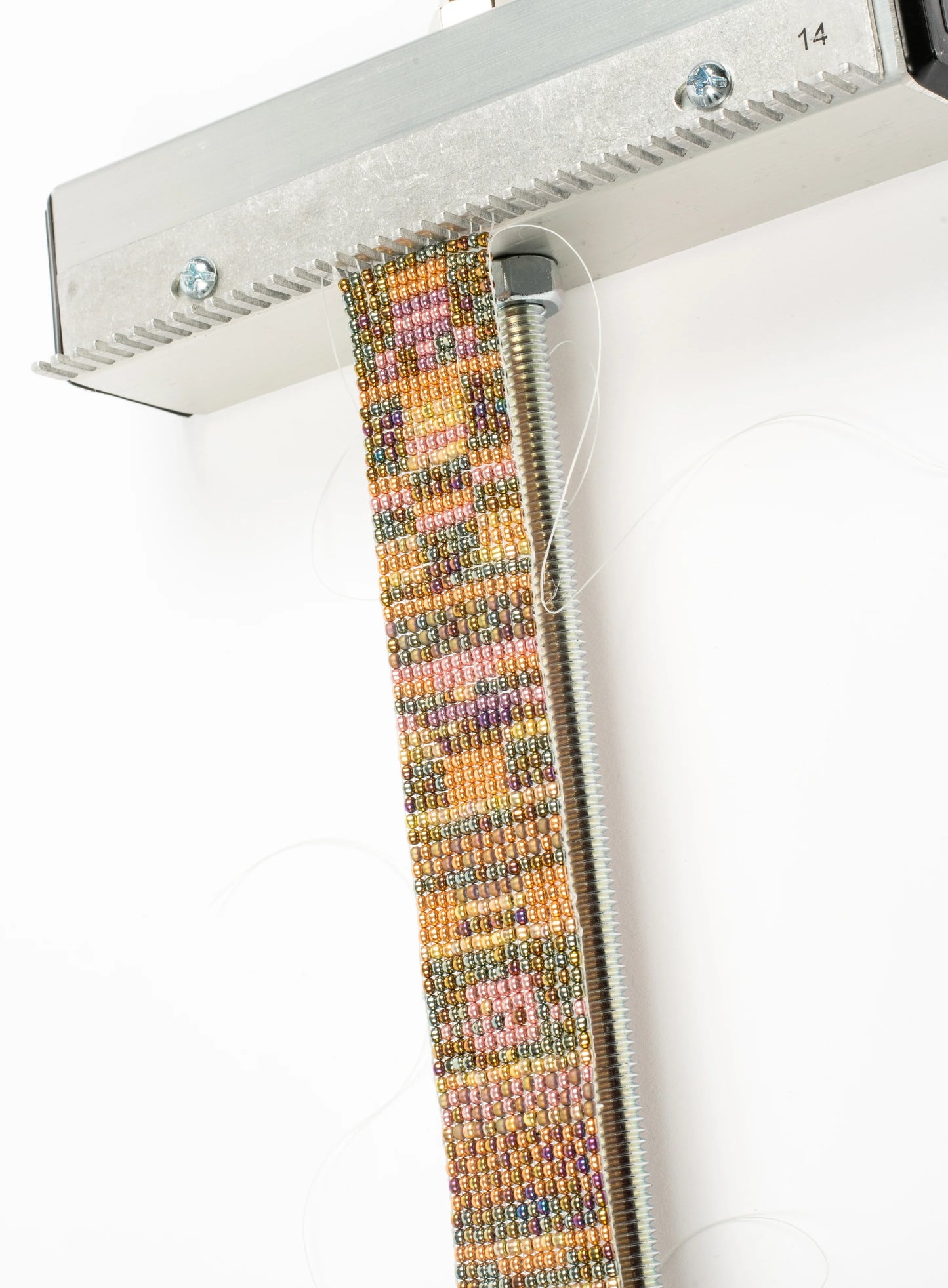Warp tension, as every tapestry or bead weaver knows, is one of the most important factors in any weaving. Both the amount of tension and the evenness of tension is important and the difference between good tension and bad tension can make or break a piece. A few weeks ago a customer emailed me about a class she took where students had to use the looms provided. To warp, pieces of warp were cut and each thread was tied individually. She ended up quitting the class. Her explanation of her experience has stuck with me and I keep thinking about the difference that having a loom with a tensioning device built in (like a Mirrix) makes for bead or weft-faced/tapestry weaving.
I don't have a loom where you need to tie individual warp threads, but I do have a basic frame that I made a few years ago that I warped for tapestry alongside a Mirrix to test see what difference an on-loom tensioning device makes.
Warp tension, as every tapestry or bead weaver knows, is one of the most important factors in any weaving. Both the amount of tension and the evenness of tension is important and the difference between good tension and bad tension can make or break a piece. A few weeks ago a customer emailed me about a class she took where students had to use the looms provided. To warp, pieces of warp were cut and each thread was tied individually. She ended up quitting the class. Her explanation of her experience has stuck with me and I keep thinking about the difference that having a loom with a tensioning device built in (like a Mirrix) makes for bead or weft-faced/tapestry weaving.
I don't have a loom where you need to tie individual warp threads, but I do have a basic frame that I made a few years ago that I warped for tapestry alongside a Mirrix to test see what difference an on-loom tensioning device makes.
What I learned:
-It IS possible to get okay tension on a loom without a tensioning device, but it isn't easy, and I imagine it would be even more difficult with a larger piece.
-I ended up having to warp the loom three times because the first time my tension wasn't even and the second time my tension wasn't tight enough. It is surprisingly difficult to warp while keeping even AND tight tension.
-Adjusting tension as you weave is a convenience I have taken for granted. It is possible to increase the tension on a loom without a tensioning device by sticking a flat object under the warp thread and over one of the beams of the loom, but it's not easy to do and has severe limitations.
-I ended up getting used to weaving with less tension than I'm used to, because I couldn't get the tension I usually weave with. This resulted in me pulling-in more than usual.
My conclusion? For adjustable, tight tension... a Mirrix is the best choice!
Want to learn more about Mirrix Looms? Click here to download our Weaving is Easy Ebook!






